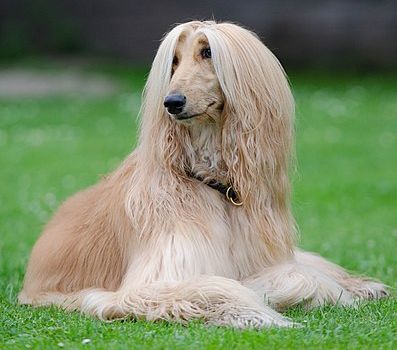


The Afghan Hound is a strikingly elegant and dignified breed, known for its long, flowing coat and aristocratic demeanor. Originally bred for hunting in the rugged mountains of Afghanistan, this breed is prized for its speed, agility, and independent spirit. Afghan Hounds are known for their aloof nature, but they form strong bonds with their families and enjoy being part of household activities. Despite their regal appearance, they are playful, affectionate, and sometimes even comical companions.
The Afghan Hound is one of the oldest known dog breeds, with a history that dates back thousands of years. Originating in the mountainous regions of Afghanistan, the breed was used for hunting game such as deer, wild goats, and even leopards. Their exceptional speed and agility made them ideal for chasing prey across rugged terrain. Afghan Hounds were highly valued and often regarded as status symbols by the local nobility. In the early 20th century, the breed was introduced to Europe and later to the United States, gaining recognition from the American Kennel Club (AKC) in 1926. Today, the Afghan Hound is admired for its beauty and grace in the show ring as well as its companionship qualities.
The Afghan Hound is a large, elegant dog with a distinctive appearance. Adults typically stand between 25 to 27 inches tall at the shoulder and weigh between 50 to 60 pounds. The breed is best known for its long, silky coat, which can come in a variety of colors, including black, cream, red, and brindle. Their almond-shaped eyes are dark and expressive, giving them a unique "eastern" gaze. Afghan Hounds have a slender, athletic build with a deep chest and a slightly arched back. Their tails are long and curled at the end, carried high when in motion. Their distinctive topknot of long, fine hair adds to their sophisticated look.
The Afghan Hound is known for its independent and sometimes aloof personality. While they can be reserved with strangers, they are loving and loyal to their families. This breed thrives in a calm and affectionate environment and does not respond well to harsh treatment. Afghan Hounds have a playful side, often engaging in silly antics that delight their owners. However, their independent nature can make them stubborn at times, requiring patience and consistency in training. They get along well with children and other pets, but their hunting instincts may lead them to chase smaller animals.
Afghan Hounds are an active and athletic breed that requires regular exercise to stay happy and healthy. Daily walks and opportunities to run in a secure, fenced area are essential for this energetic dog. Due to their history as hunters, Afghan Hounds have a strong prey drive and should always be kept on a leash or in an enclosed space when outdoors. Activities like agility training or lure coursing are excellent ways to channel their energy and provide mental stimulation. Despite their high activity levels, Afghan Hounds also enjoy lounging and relaxing indoors, making them well-suited for a variety of lifestyles.
Training an Afghan Hound can be a challenge due to their independent and sometimes stubborn nature. Positive reinforcement methods, such as treats and praise, are the most effective way to train this breed. Early socialization is critical to help them become well-adjusted and confident in different environments. Afghan Hounds are intelligent but can be selective in their response to commands, so patience and consistency are key. Short, engaging training sessions work best, as this breed can quickly lose interest in repetitive tasks. Socializing them with other dogs, people, and experiences early on will help them develop into well-behaved companions.
The Afghan Hound is generally a healthy breed, but like all dogs, it is prone to certain health issues. Common concerns include hip dysplasia, cataracts, and hypothyroidism. Regular veterinary check-ups, a balanced diet, and maintaining a healthy weight are important to their overall well-being. Their luxurious coat requires significant grooming to keep it free of tangles and mats. Daily brushing and occasional baths with dog-specific shampoo are necessary to maintain the coat’s condition. Their long ears should be checked regularly for signs of infection, and their teeth should be cleaned to prevent dental issues. Despite their grooming needs, Afghan Hounds are relatively low-maintenance in terms of shedding.
The Afghan Hound has an average lifespan of 12 to 15 years. Proper care, including a healthy diet, regular exercise, and preventive veterinary care, can help them live a long and happy life. Early detection and management of any health issues can also contribute to their longevity.
© copyright Dog Compendium 2024 - 2025